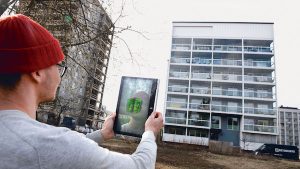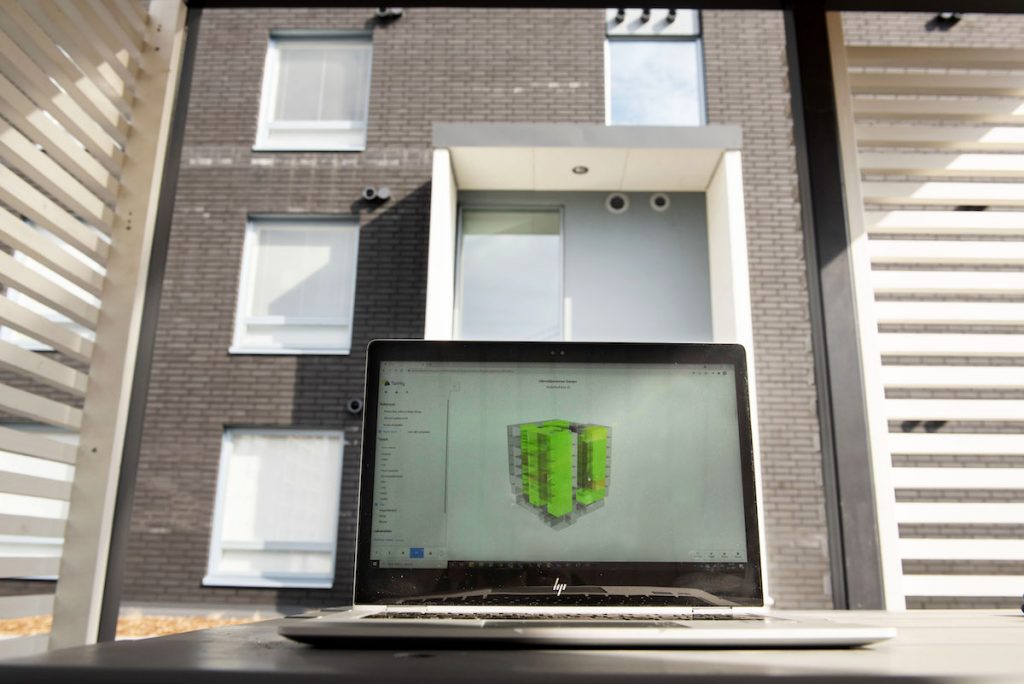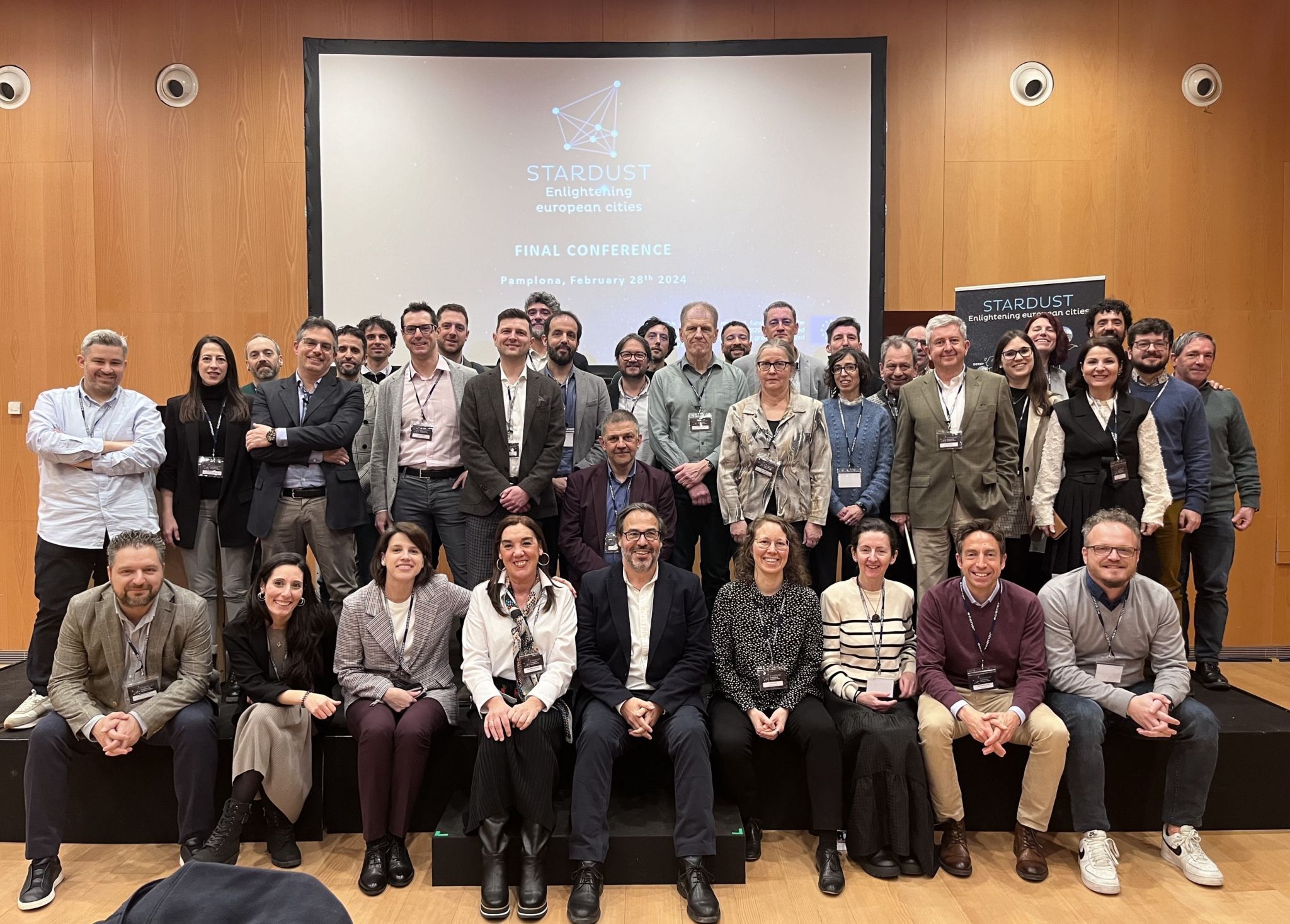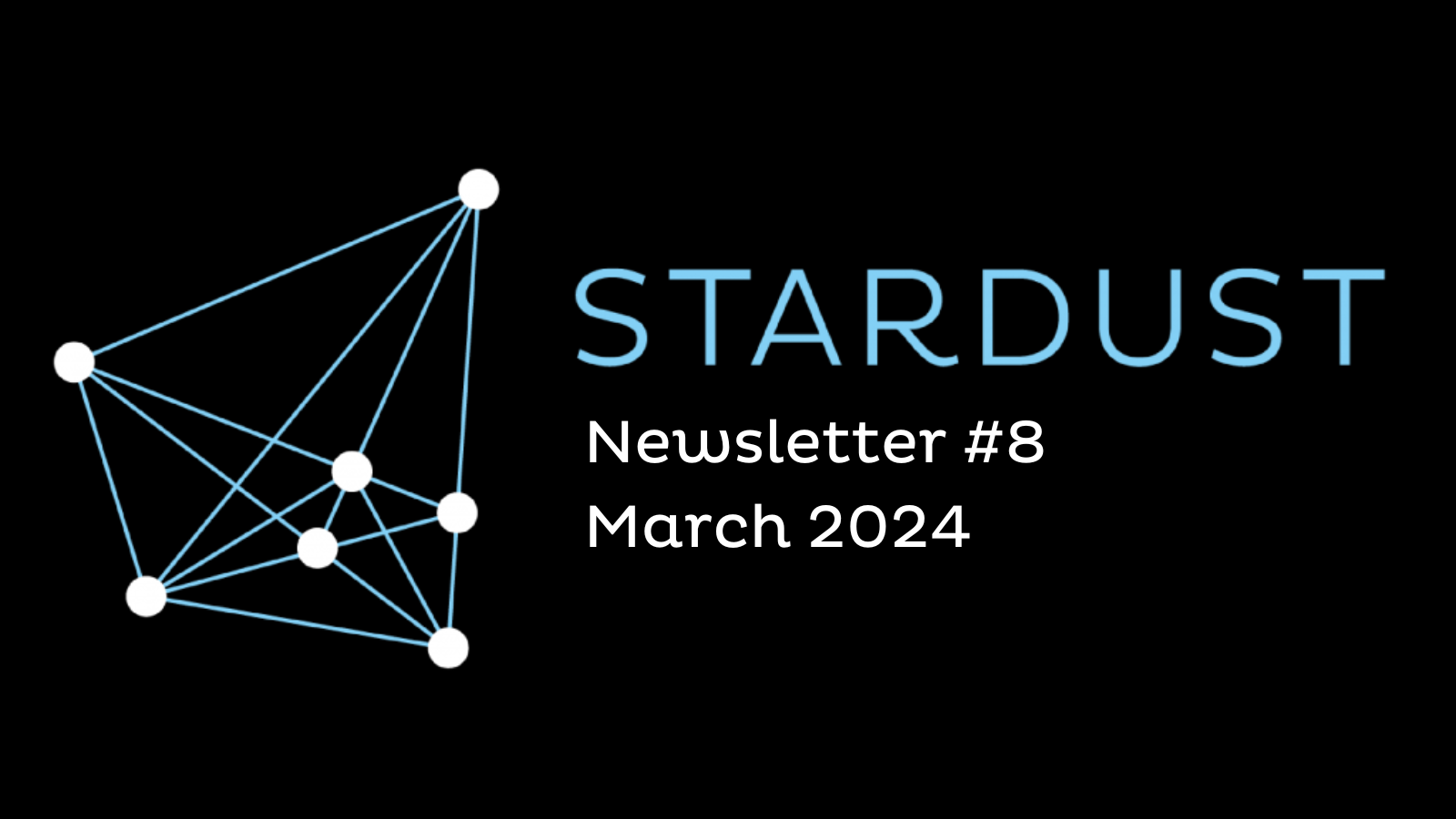A three-dimensional data model of the building has been created during the design and construction phase. It contains all relevant information about the structures and building technology of the building. This model can be viewed by a resident through a web page. The page shows, for example, real-time room temperatures and water consumption per apartment.
“Information models have been used for a long time in the design and construction of buildings, but now we are also using the same information for property maintenance. Residents also find useful information about their own apartment”, says Niklas Töyrylä, Skanska’s project manager.
Skanska wants to create the conditions for intelligent building management. Everything is based on information in digital form that is accessible to everyone.

“The information will be transmitted in digital form to the property owners and residents when the building is completed,” says Development Manager Miro Ristimäki.
“Development work continues. In the future, for example, a resident would find out what kind of bulb he or she should buy for a cooker hood. The website could also have a link to the place where the bulbs are sold”, Ristimäki illustrates.
The technical information contained in the digital twin will also be of great help to the property manager and maintenance company in charge of the property. For example, repairing a broken device is likely to be done in one go when the repairer can bring the right tools and spare parts.
“Customer satisfaction improves when a fault is rectified quickly. It also saves time for those responsible for maintaining the property”, Niklas Töyrylä points out.
The application also helps to keep the indoor conditions optimal, as the operation of the heating and ventilation control system can be monitored and adjusted in real time. In the future, the application may automatically report deviations.
“If, for example, the temperature in an apartment rises too much, the maintenance company would be informed immediately. In many cases, the situation could be rectified before the resident even notices anything.”
The improvement of the flow of information is also required by the Finnish law being prepared, according to which information on construction products to be installed in new buildings and their instructions for use must be found in electronic form in the future.
“It is worthwhile for industry players to work more closely together and to involve customers and third parties in the development of new issues,” says Ristimäki.
The Sampo building is also otherwise progressive and to proof this data is collected and analyzed in STARDUST project. Solar panels have been installed on Sampo’s roof, the energy collected from which is utilized in the ventilation system, elevators and lighting. Energy-efficient ventilation units have efficient heat recovery.
If necessary, they can also cool the air taken from outside. Even though the building is in Finland, cooling is needed in the summer, when zero-emission solar electricity is most available.


